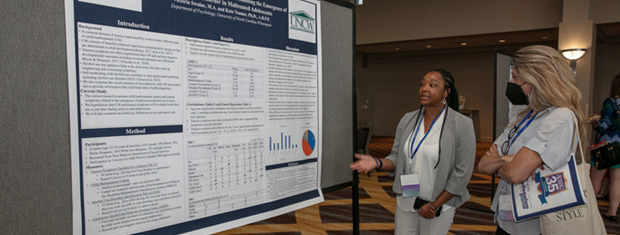




The APSAC Advisor is a peer reviewed quarterly news journal for professionals in the field of child abuse and neglect.
The APSAC Advisor provides succinct, data-based, practice-oriented articles that keep interdisciplinary professionals
informed of the latest developments in policy and practice the field of child maltreatment. It is designed to highlight
best practices in the field and publish original articles and current information about child maltreatment for professionals
from a variety of backgrounds including medicine, law, law enforcement, social work, child protective services, psychology,
public health and prevention in the U.S.
 If you wish to learn more about submitting an article to the Advisor, please click here.
If you wish to learn more about submitting an article to the Advisor, please click here.
This library contains Advisor issues dating back to the first issue in 1988. The most recent issue appears at the top.
Scroll down to select past issues by year and issue number. Once a publication appears in the box, you
can use the Enlarge button to open the document in a new window or tab (depending on how your browser is set up).
This will allow you to view the document with larger print.
To print a document, first use the Enlarge button to open the document in a new window or tab. Then use your browser's Print command.
To return here from a new tab, close the tab. To return from a new window, click your browser's Back button.
In the listing below, click on a year and issue number to see the articles in that publication.
2005 Number 1
The Contribution of Decision Theory to Promoting Child Safety
Child welfare practice is, first and foremost, about making effective decisions that promote outcomes of safety, permanence, and well- being for abused and neglected children. Further, the accurate and timely identification of children at high risk of maltreatment, either imminently or at some time in the future, is a prerequisite to making the most effective decisions to assure their safety.
The Parenting Patterns of Men Who Batter
The lives of women and children can be torn apart by the violent and intimidating behavior of men who batter. Three million or more children are exposed to acts of domestic violence each year (Fantuzzo & Mohr, 1999). The great majority of children who live with a batterer see or hear one or more acts of violence (Kolbo, Blakely, & Engleman, 1996), and a substantial number witness sexual assaults against their mother (Wolak & Finkelhor, 1998). These children show higher rates of aggression and other behavioral and adjust- ment problems (Graham-Bermann, 1998), including hyperactivity, anxiety, withdrawal, and learning difficulties (Gleason, 1995).
An Assessment of the Privatization of Child Welfare Services
Public child welfare agencies are increasingly contracting with agencies in the private sector to provide a variety of services to children that were previously provided almost exclusively by public agencies. Based on the assumption that market competition produces greater economy and effectiveness, privatization has been embraced as a strategy for providing higher quality services at a lower cost.
The purpose of Journal Highlights is to alert readers to current literature on child abuse. Selected articles from journals representing the variety of disciplines reflected in APSAC's membership are presented in the form of an annotated bibliography.
APSAC Advisor 16(4) and 17(1): Full Issue